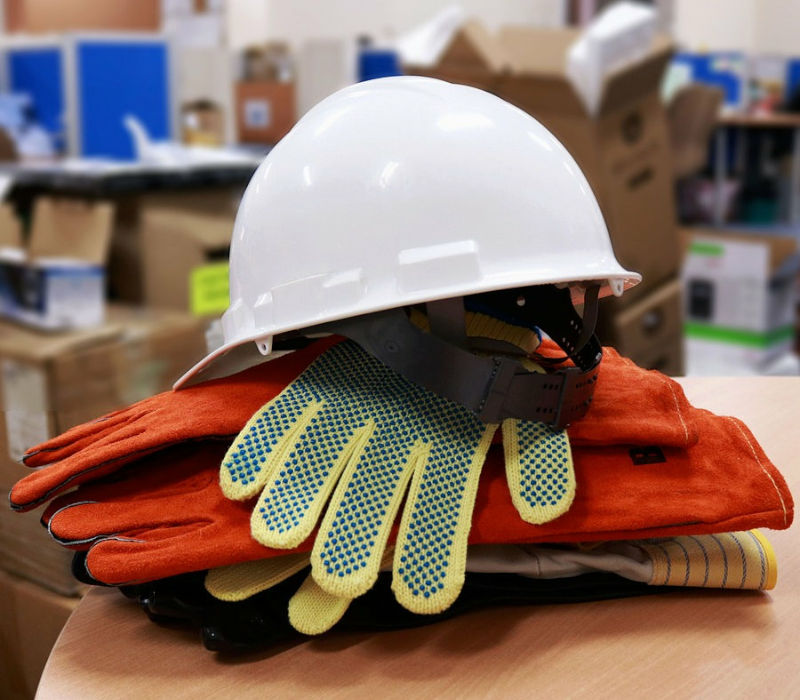Creating a safe working environment is not only up to employers, but also to workers. Not only must standards be set, they must also be monitored. Workers have a right to expect that the workplace is safe and that they return home safe and sound at the end of their working day.
Safety is crucial in any workplace, but maintaining it can take some preparation. Workers have a right to expect that the workplace is safe and that they return home safe and sound at the end of their working day. It is up to employers to ensure that the working environment and workplace are actually suitable. Setting health and safety guidelines is the first step towards a safe workplace - and of course it is equally important to ensure that these guidelines are followed. Creating a safe working environment is not just a matter for employers, but also for workers. Establishing and enforcing proper safety standards and regular inspections are key to maintaining a safe working environment.
Basics of safety checks:
Not only do you need to set standards, but you also need to monitor them to make sure that workers are complying with any rules. The audit can be used to scrutinise the safety protocol and identify any shortcomings. This will help to eliminate potential hazards, risks of non-compliance and possible infringements.
Step 1: Plan and schedule
Schedule checks to ensure the safety of the workplace. Remember that effective control is never easy and equipment may need to be shut down. It is important to find the right time to do this, as it is necessary but should not be done too often.
Carrying out inspections weekly or monthly can have an impact on productivity. Inspections that are too frequent or too infrequent can reduce their effectiveness. The key is to find the right balance. It is essential to consider how the business operates and adjust the schedule accordingly.
In all cases, the check must be thorough. A cursory check is not an inspection!
Step 2: Preparation and communication
Ideally, workers should not have to prepare their work area for a security check, as they would have to follow the security guidelines anyway. The upcoming safety inspection is the perfect opportunity to refresh their knowledge of the safety guidelines. Workers should also be prepared for any disruptions to their workflow.
A safety inspection also allows them to see any deficiencies in the work area, making it safer and more efficient. By doing this, the audit allows safety to become part of the routine. Regardless of how much time workers spend in their area, it cannot be assumed that they always know where safety equipment is located. It may be worthwhile to place directional signage to safety equipment, safety signs or signs indicating the location of LOTO stations.
As safety is always a critical issue in work areas, if you are not sure how to improve safety, it may be a good idea to contact an external safety team who can identify problem areas.
Step 3: Conducting the audit
During the inspection, an inspector or a team of inspectors assesses the safety conditions at the work site. This includes a walk-through of the facility, where the inspector will check that conditions are not likely to lead to injury or other negative health effects.
Ideally, the inspection should be carried out in a way that causes as little disruption and disturbance as possible, but this may vary depending on the nature of the installation. While in a warehouse the inspection can be carried out quickly, even without interrupting work, in a production line it is more time-consuming and may involve longer or shorter stoppages of work.
Step 4: Recording and reporting hazards
Although the specific hazards vary from job to job, there are some general areas to always watch out for:
1. Adequate guards: machinery and other equipment with built-in safety guards must have fully effective protection. Other equipment, such as cable boxes and circuit breakers, may require additional LOTO (lockout/tagout) devices for adequate safety.
2. Labelling of hazardous environments: all chemicals, hazardous substances or potentially hazardous electrical components must be appropriately labelled on site. Even standard electrical systems such as switchboards and panelboards may require special labeling for compliance.
3. Properly located safety equipment: first aid kits, eye wash stations, LOTO lockouts and other emergency equipment should be located in clearly visible, easily accessible locations. Workers should also have easy access to personal protective equipment.
4. Untrained workers: workers should be trained in the correct use of machinery and records of training should be easily accessible.
5. Adequate ventilation: hazardous fumes from machinery and chemicals should only be in places with adequate ventilation, such as near a fume hood.
Step 5: Tracking
The inspector gives a description of the problems, a time frame within which to correct the problems, and possible suggestions for correcting the problems. Ignoring hazards negates the value of the safety inspection, and workers may feel that these measures ignore their safety, which can affect morale. Workers have the right to report any violation that ignores the shortcomings identified within the framework of the inspection.
After the inspection, it is worth taking time to reflect on the findings with the workers. This will provide an opportunity to address issues such as reminding workers of common safety hazards or reviewing ways to eliminate potential worker errors in the future.
Safety is a priority in every workplace. By following the practices listed above, effective safety audits can be carried out. Careful and deliberate safety checks give workers confidence that they can work without fear of injury and provide further reassurance to company stakeholders about their responsibilities.

